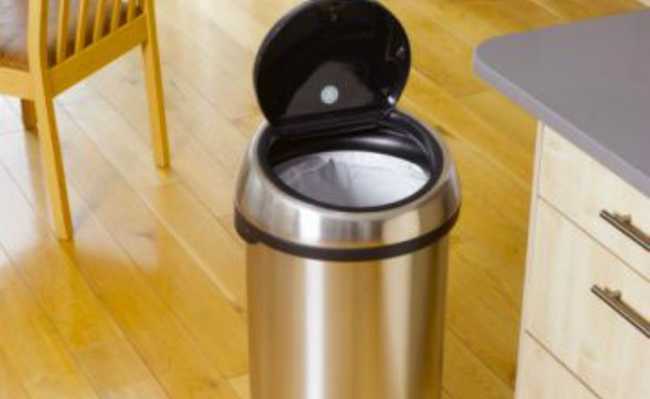What is mold and why is it dangerous?
Exposure to mold can be fatal. Understand what it is and know how to prevent

Edited and resized image of Annie Spratt, is available on Unsplash
Mold, also known as mold, is a term that refers to several species of fungi, which usually have a black or green color. The most common species is the Stachybotrys chartarum, and usually appears in hot and humid places such as bathrooms, kitchens, toilets, sinks, showers, basements and bathtubs. But mold can also grow on food, wood, earth or paper.
Most molds in mold are toxigenic, meaning they release toxins that can be irritating or significantly harmful to some people, even causing poisoning. Called mycotoxins, these toxic chemical substances are produced by the fungus during its decomposition of food, in the form of secondary metabolites, not essential for its primary maintenance, but capable of reaching other species.
These compounds give fungi a competitive advantage over other fungi and bacteria present in the environment. Almost all are cytotoxic, resulting in the disruption of cell membranes and other structures, or interfering with vital processes such as protein synthesis and RNA or DNA.
What are the symptoms of mold poisoning?
Mycotoxicosis, or “mold poisoning,” can affect the upper respiratory system with symptoms such as a cold or flu. But in people with allergies or asthma they can be fatal.The common symptoms of mold poisoning experienced by people who do not have allergies or asthma are usually:
- Cough
- wheezing
- blockage of the nose
- Itchy or red eyes
- itchy skin
If you have an allergy or asthma, you may have more severe forms of these symptoms or have other severe symptoms due to mold, such as:
- Headaches
- Exhaustion
- Frequent cough, especially at night
- Sinusitis
- Allergic Reactions
- Chest pain
- Fever
- difficulty breathing
Long-term exposure to mold, even if it does not cause immediate symptoms, can also lead to:
- hair loss
- Anxiety
- Confusion or memory loss
- Numbness in hands and feet
- Stomach pain
- light sensitivity
- weight gain for no reason
- muscle cramps
Exposure to mold can cause severe symptoms if you have any of the following conditions:
- Seasonal or Chronic Allergies
- Specific mold allergy
- Asthma
- Cystic fibrosis
- Weakened immune system
- Chronic Obstructive Pulmonary Disorder (COPD)
- Immunodeficiency disorders
While it can be harmful to anyone, exposure to mold is especially bad for young children. A study of 36 species of fungi in 289 households with eight-month-old babies found that babies and children exposed to mold may be more likely to develop asthma later in life.
How is mold poisoning diagnosed?
Mold poisoning cannot always be diagnosed by its most common symptoms alone. Blood tests, allergy tests and assessments of the levels of mold present in the home may be necessary.
To diagnose mold or allergy poisoning, the doctor may perform:- Blood test. He takes a blood sample and sends it to a laboratory to test the reaction of certain antibodies in the immune system to different species of fungi. This can help diagnose both mold allergies and more severe mold reactions that may indicate intoxication. A blood test can also check the blood for biotoxins from exposure to mold, which can also reveal poisoning.
- Skin prick test. The doctor applies small amounts of mold to the patient's skin using a needle. If the area has a rash or hives, it means the person is allergic.
How is exposure to mold treated?
Treatment for mold allergies and exposure symptoms may include:
- Sprays or nasal washes. Nasal corticosteroids, such as fluticasone (Flonase), reduce airway inflammation caused by fungal allergies. Also, a solution of hot, distilled water and saline solution can help rid the nasal passages of mold spores and remove congestion.
- Antihistamines, such as cetirizine (Zyrtec) or loratadine (Claritin), reduce the immune system's response, minimizing airway inflammation.
- Decongestants such as pseudoephedrine (Sudafed) help reduce swelling due to allergic reactions.
- Montelukast (Singulair). This oral medication reduces mucus in the airways, which reduces the symptoms of both mold allergies and asthma.
- Regular exposure. Your doctor may recommend regular injections with small amounts of allergens to boost your body's immunity.
Identifying mold at home
- Look for clustered patches, especially in hot, humid environments. Pay attention if you start coughing, sneezing or wheezing when you enter the house - even if you don't see mold, spores or mycotoxins can still cause symptoms.
- Look for causes of mold growth, such as leakage, lack of ventilation, stale food, paper or wood.
- Solve any problems that cause mold growth. Discard anything affected by fungi or contributing to their growth.
Removing mold from the house
Get an air purifier with a Hepa filter (High Efficiency Particulate Arrestance) as they are capable of retaining mold spores. Cover yourself with long-sleeved clothing, mask, gloves, and boots, and apply bleach to mold-affected areas of the house with bleach or a fungicidal agent. Allow these areas to dry and the bleach to evaporate before returning to the site and with a spray containing two tablespoons of sodium bicarbonate diluted in a glass of vinegar with ten drops of three different types of essential oils with fungicidal action (can be tea tree essential oil, cloves and rosemary), spread the mixture on the affected regions to flavor the area . But remember: mold will return if the conditions that predispose its appearance are not permanently removed, such as infiltration, leakage, lack of light and ventilation.
How to prevent mold
- Clean the house regularly;
- Always leave doors and windows open for ventilation, especially after taking a shower or carrying out other tasks that increase humidity;
- Use a dehumidifier to keep the relative humidity (RH) below 50%;
- Use an indoor air purifier with high efficiency particulate air filtration (Hepa) or install an appropriate high efficiency filter in your ventilation system;
- Make sure your gutters are clean and are not blocking water drainage;
- Do not leave old books, newspapers or wood unused for long periods;
- Do not place rugs in bathrooms, kitchens and basements;
- Don't ignore leaking pipes or groundwater - get them fixed as soon as possible;
- Avoid consuming food that has been in the fridge for a long time, prefer fresh food.
People with asthma, allergies, or immune system conditions are especially vulnerable to mold. But it's not difficult to prevent overgrowth, keeping indoor humidity low and space clean.
Watch out for small spots of mold and take action quickly before the growth gets out of control.
If you think your health is being affected by exposure to mold, get medical help, talk to your allergist.
Adapted from Healthline, PubMed and Wikipedia










